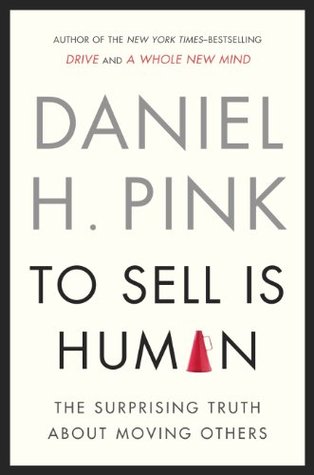More on this book
Community
Kindle Notes & Highlights
Read between
January 12 - February 3, 2020
2. Improve your q...
This highlight has been truncated due to consecutive passage length restrictions.
“open-ended” (questions that require an explanation and cannot be answered with “yes” or “no,” or just one word). Then, looking over the two types of questions, think about the advantages and disadvantages of each variety.
3. Prioritize your questions. Choose your three most important questions.
a trio of powerful questions that you can ask the person on the other side of the table.
clarify where you are and where you should be going. Find more information on this at: http://www.rightquestion.org.
Influence: Science and Practice by Robert Cialdini.
This book is his classic. You need to read it.
http://www.influenceatwork.com.
Made to Stick: Why Some Ideas Survive and Others Die by Chip Heath and Dan Heath.
It will teach you how to create messages that stick, through the principles of simplicity, unexpectedness, concreteness, credibility, emotions, and stories.
Switch by Chip Heath and Dan Heath.
This one is about change—which they’ll tell you depends on the emotional elephant and the rational rider working in concert.
Mindless Eating: Why We Eat More Than We Think by Brian Wansink.
murkiness’s close cousin is mindlessness—the state ...
This highlight has been truncated due to consecutive passage length restrictions.
mindlessness allows us to fall prey to hidden persuaders that make us overeat ...
This highlight has been truncated due to consecutive passage length restrictions.
Nudge: Improving Decisions About Health, Wealth, and Happiness by Richard H. Thal...
This highlight has been truncated due to consecutive passage length restrictions.
altering “choice architecture” can nudge people to make better decisi...
This highlight has been truncated due to consecutive passage length restrictions.
three key abilities: to pitch, to improvise, and to serve.
The catchers took passion, wit, and quirkiness as positive cues—and slickness, trying too hard, and offering lots of different ideas as negative ones.
In the most successful pitches, the pitcher didn’t push her idea on the catcher until she extracted a yes. Instead, she invited in her counterpart as a collaborator.
The most valuable sessions were those in which the catcher “becomes so fully engaged by a pitcher that the process resembles a mutual collaboration,” the researchers found.
“Once the catcher feels like a creative collaborator, the odds of rejection diminish,”
“in an unsuccessful pitch,” another producer explained, “the person just doesn’t yield or doesn’t listen well.”
The purpose is to offer something so compelling that it begins a conversation, brings the other person in as a participant, and eventually arrives at an outcome that appeals to both of you.
When I ask a question, you’re compelled to respond, either aloud if the question is direct or silently if the question is rhetorical. That requires at least a modicum of effort on your part or, as the researchers put it, “more intensive processing of message content.”
By making people work just a little harder, question pitches prompt people to come up with their own reasons for agreeing (or not).
when people summon their own reasons for believing something, they endorse the belief more strongly and become more likely to act on it.
every e-mail we send is a pitch.
Whether somebody accepts that invitation, or even opens the e-mail at all, depends most on who sent it.
Utility worked better when recipients had lots of e-mail,
your e-mail subject line should be either obviously useful
or mysteriously intriguing
usefulness will often trump intrigue,
Along with utility and curiosity is a third principle: specificity.
subject lines should be “ultra-specific.”
readers assigned the highest ratings to tweets that asked questions of followers, confirming once again the power of the interrogative to engage and persuade.
They prized tweets that provided information and links, especially if the material was fresh and new
they gave high ratings to self-promoting tweets—those ultimate sales pitches—provided that the tweet offered useful inf...
This highlight has been truncated due to consecutive passage length restrictions.
every Pixar film shares the same narrative DNA, a deep structure of storytelling that involves six sequential sentences: Once upon a time ______________________________. Every day, _______________. One day _________________________. Because of that, ___________________. Because of that, _______________________. Until finally ___________________.
The One-Word Pitch Pro tip: Write a fifty-word pitch. Reduce it to twenty-five words. Then to six words. One of those remaining half-dozen is almost certainly your one-word pitch.
The Question Pitch
Use this if your arguments are strong. If they’re weak, make a statement. Or better yet, find some new arguments.
The Rhyming Pitch
Go online and find a rhyming dictionary. I’m partial to RhymeZone (http://www.rhymezone.com).
The Subject Line Pitch
appeal to either utility or curiosity.
The Twitter Pitch
limit your pitch to 120 characters
The Pixar Pitch Pro tip: Read all twenty-two of former Pixar story artist Emma Coats’s story rules: http://bit.ly/jlVWrG Your try: Once upon a time __________________. Every day, ______________. One day _______________. Because of that, _______________________. Because of that, _____________. Until finally ________________.
clarify your purpose and strategy by making sure you can answer these three questions:


